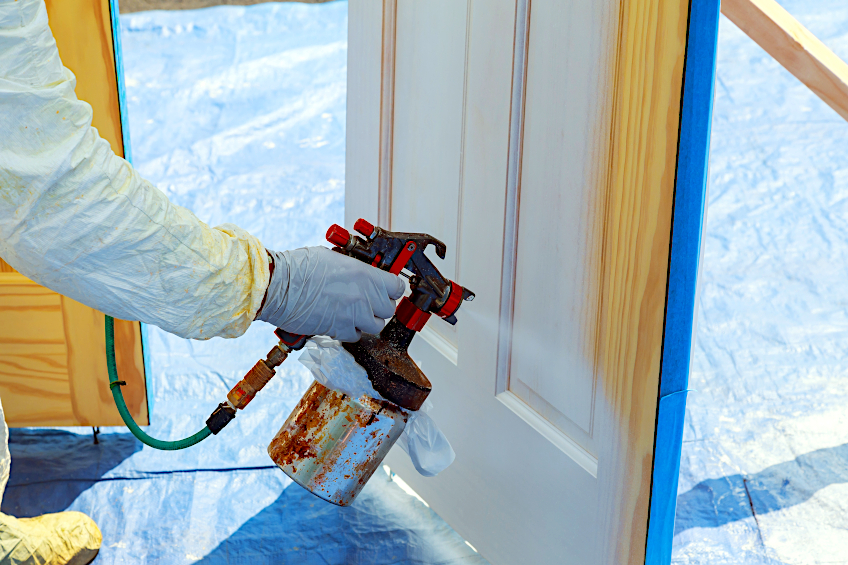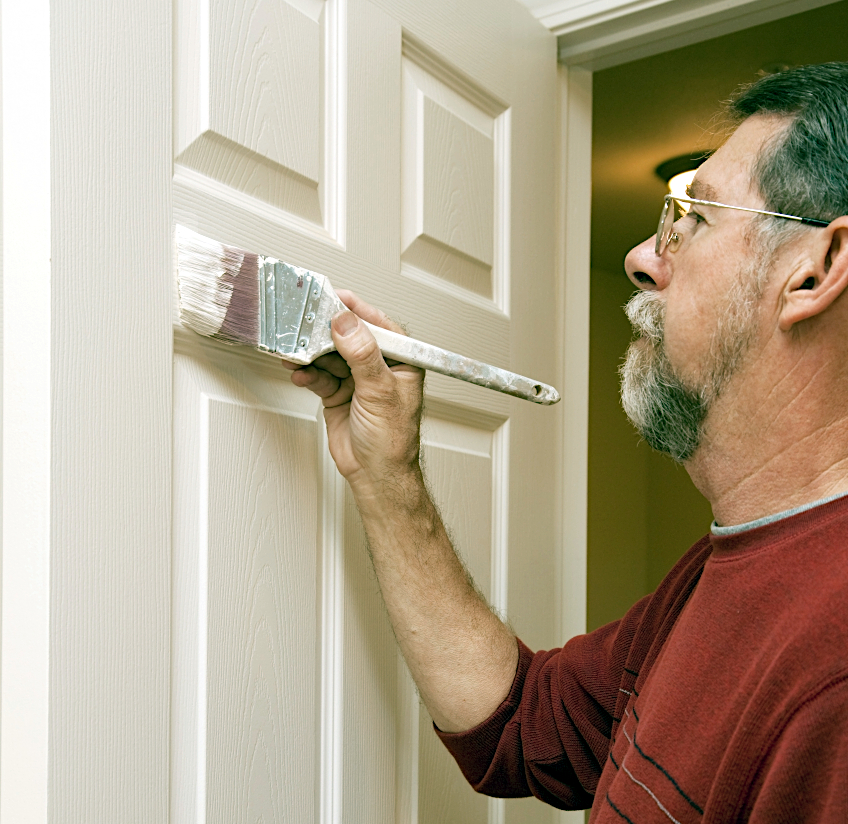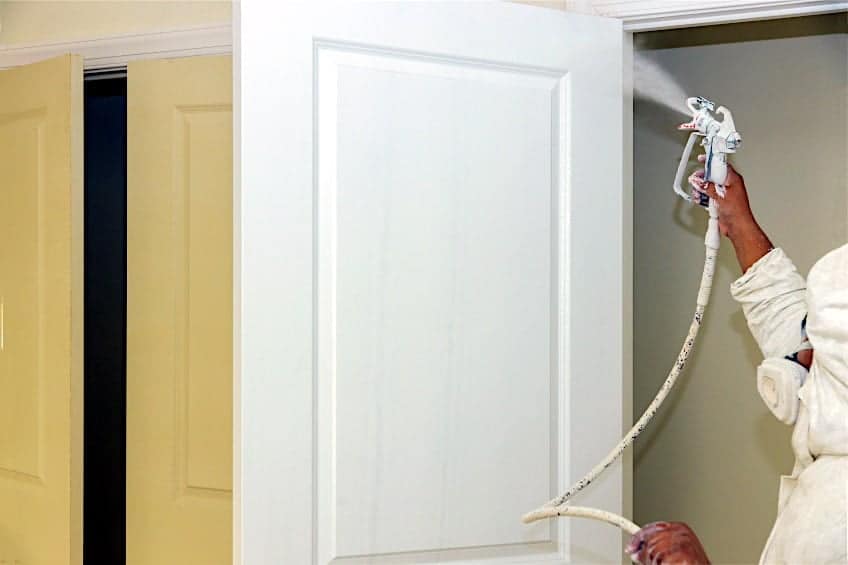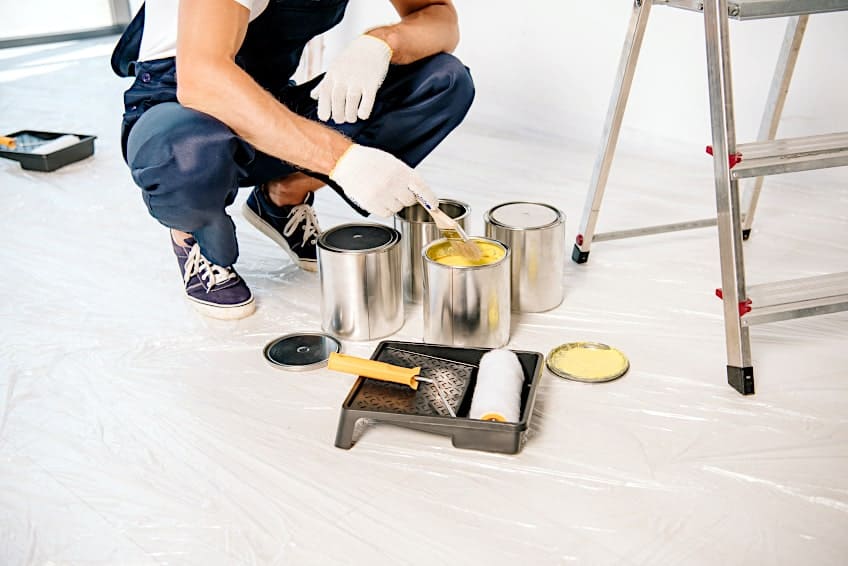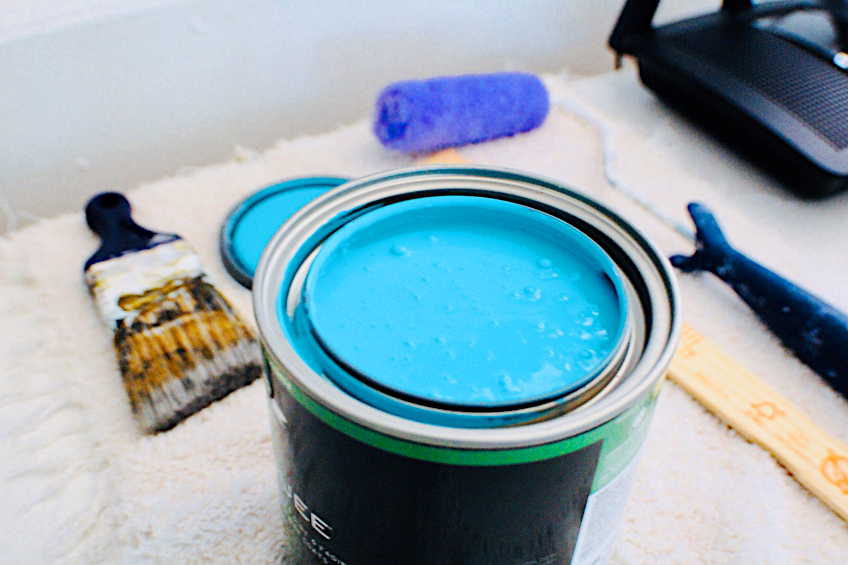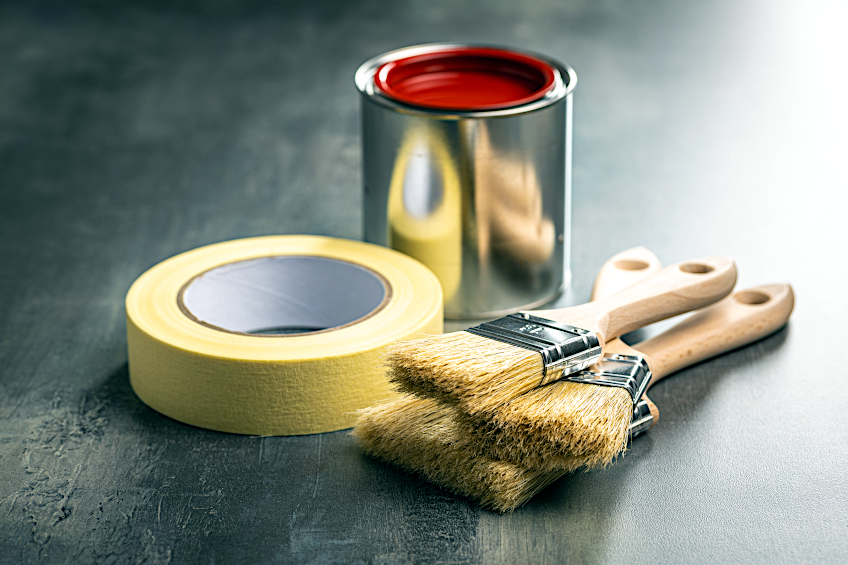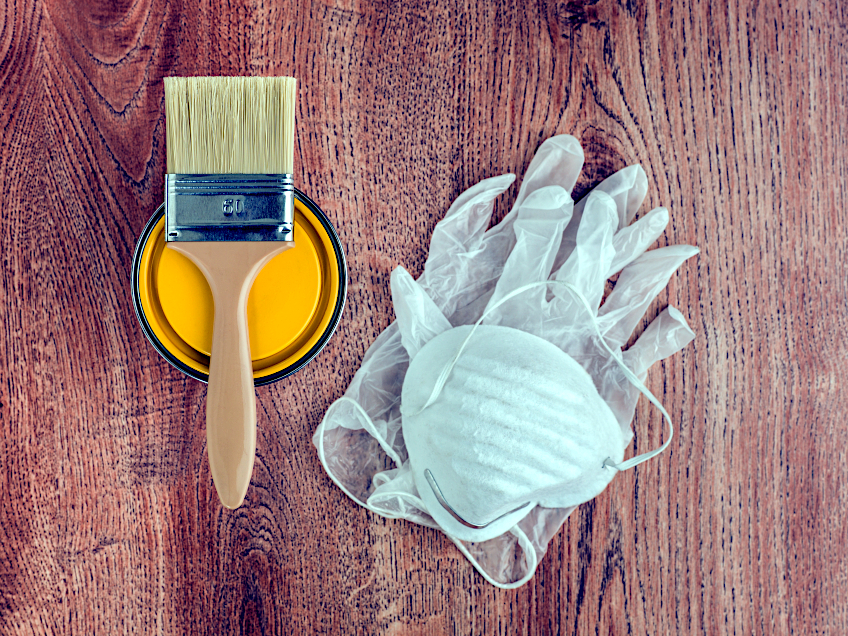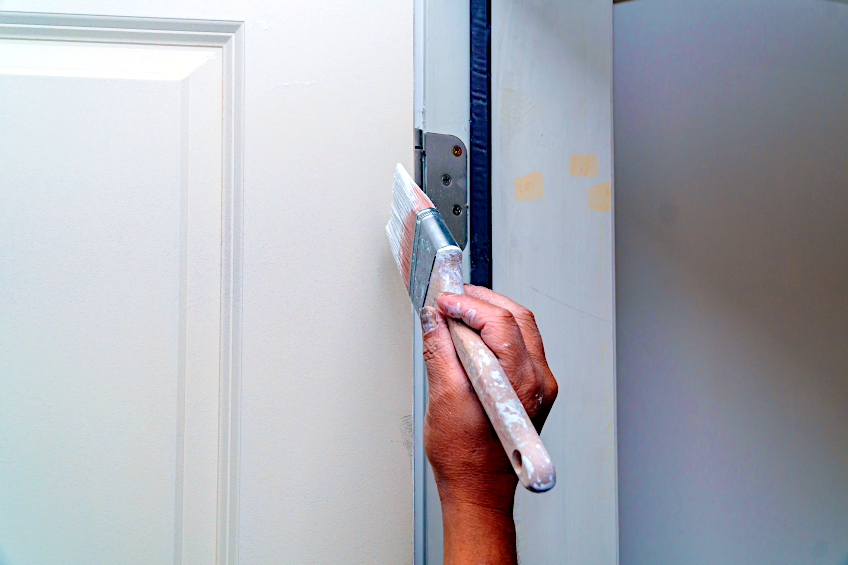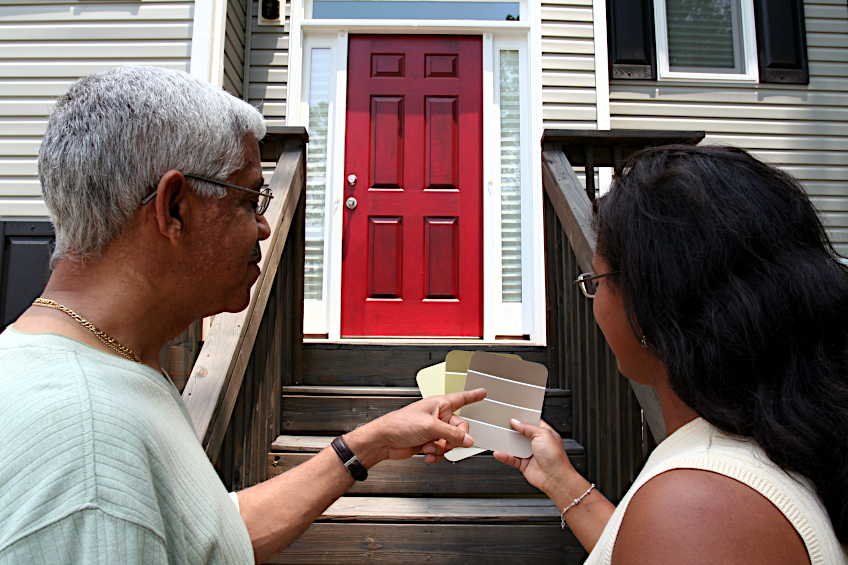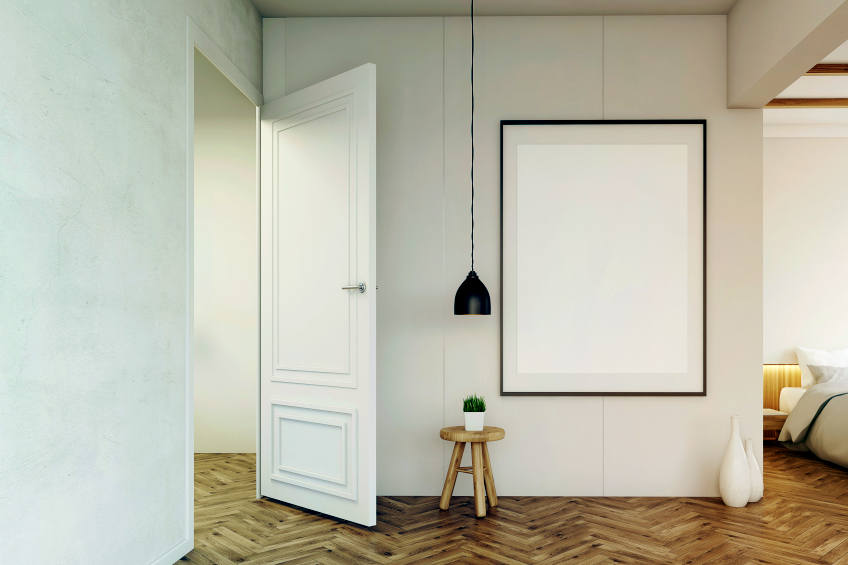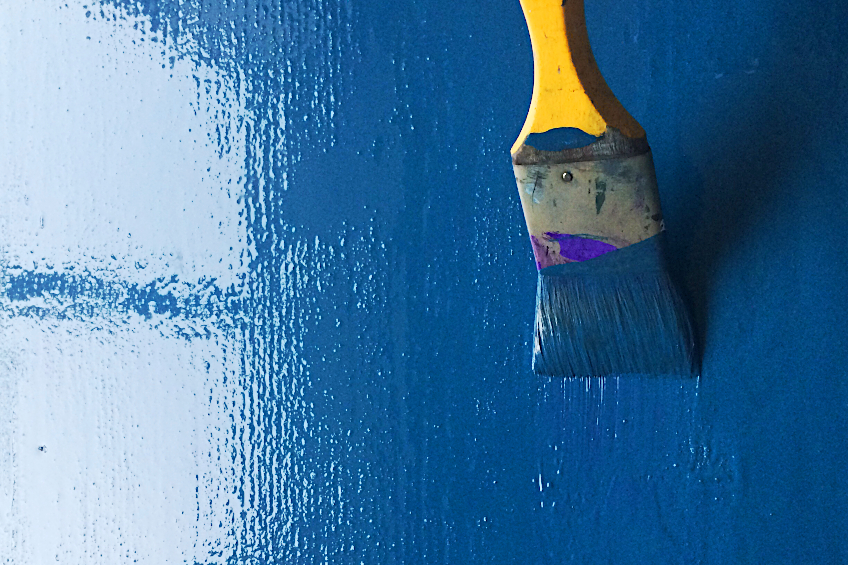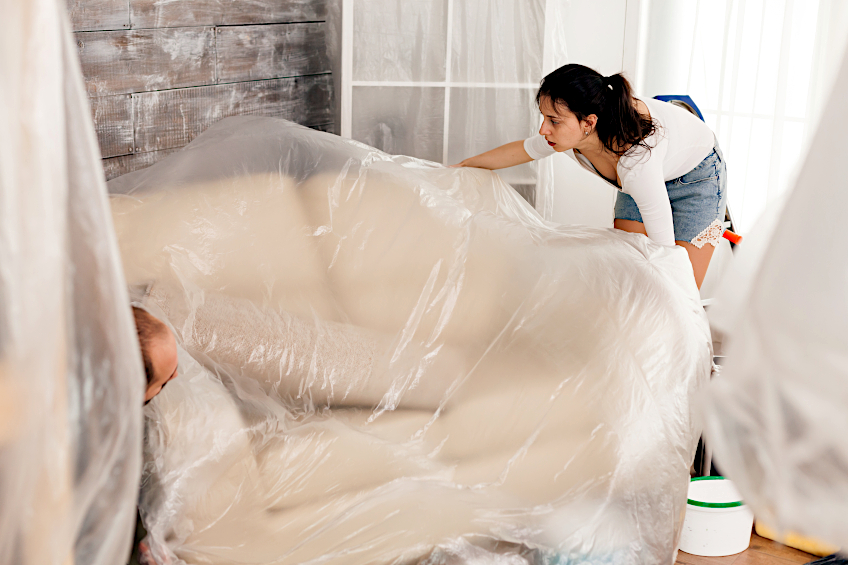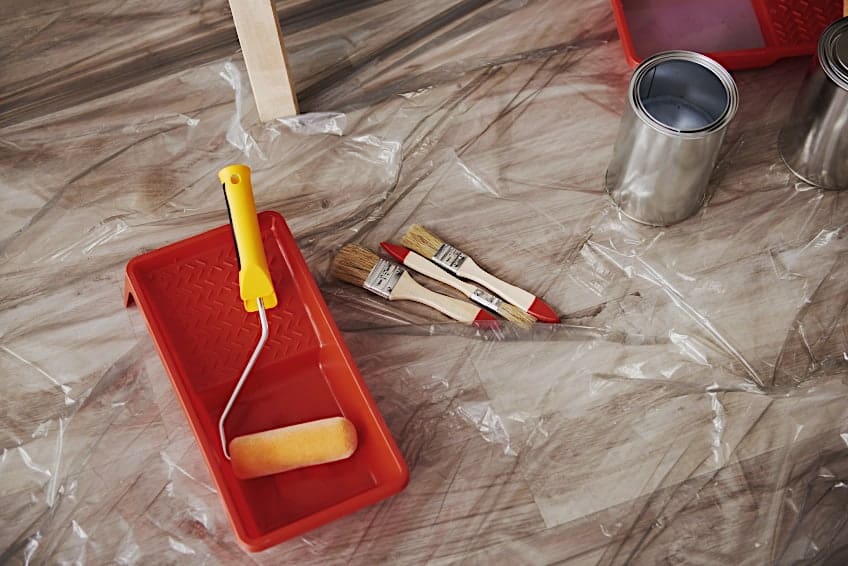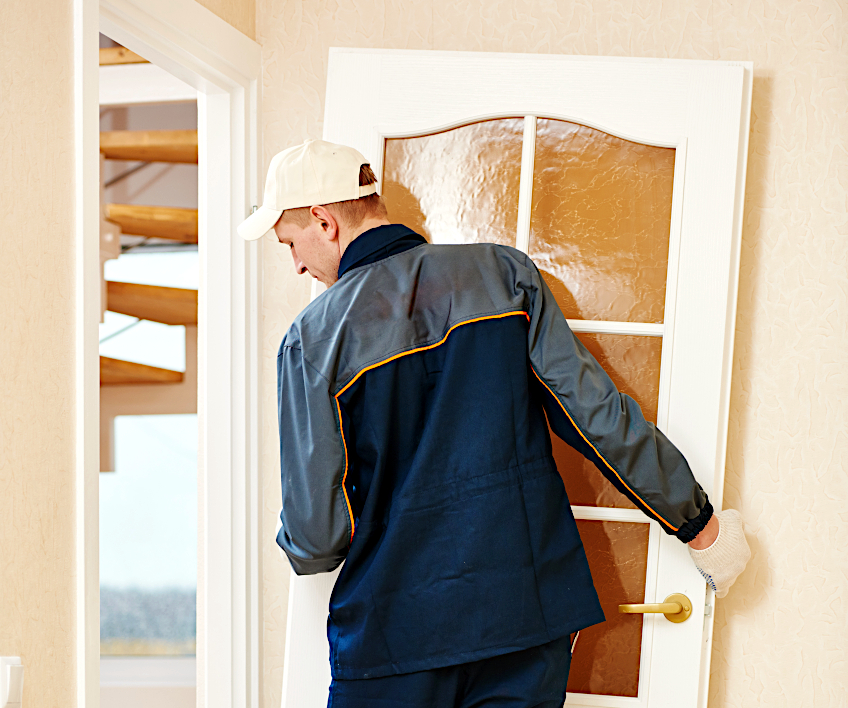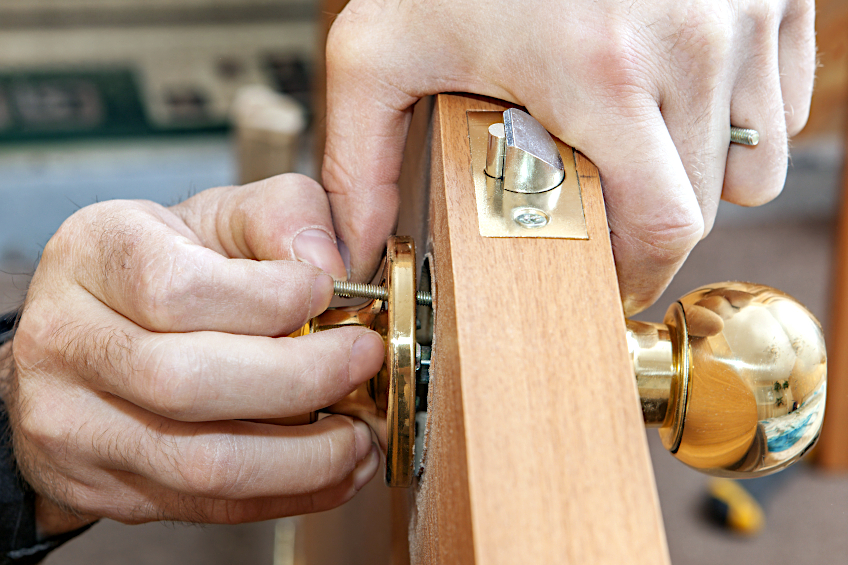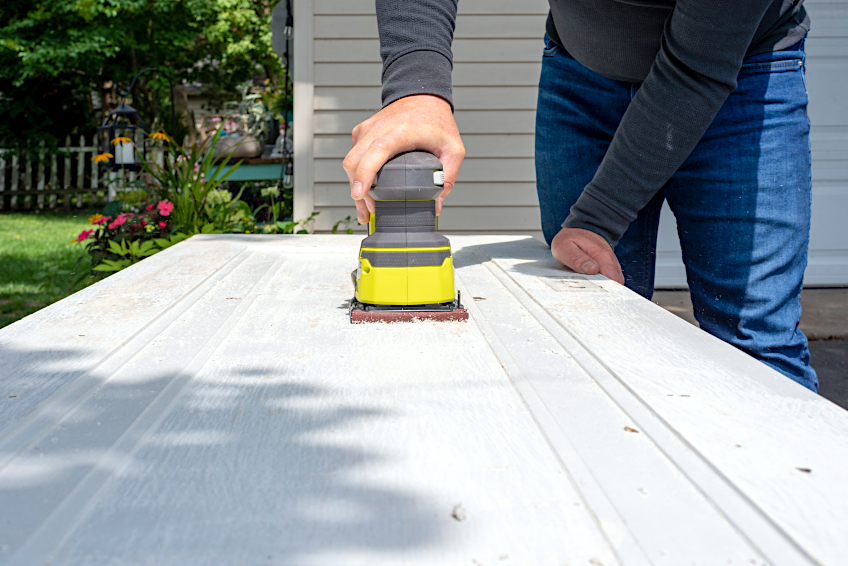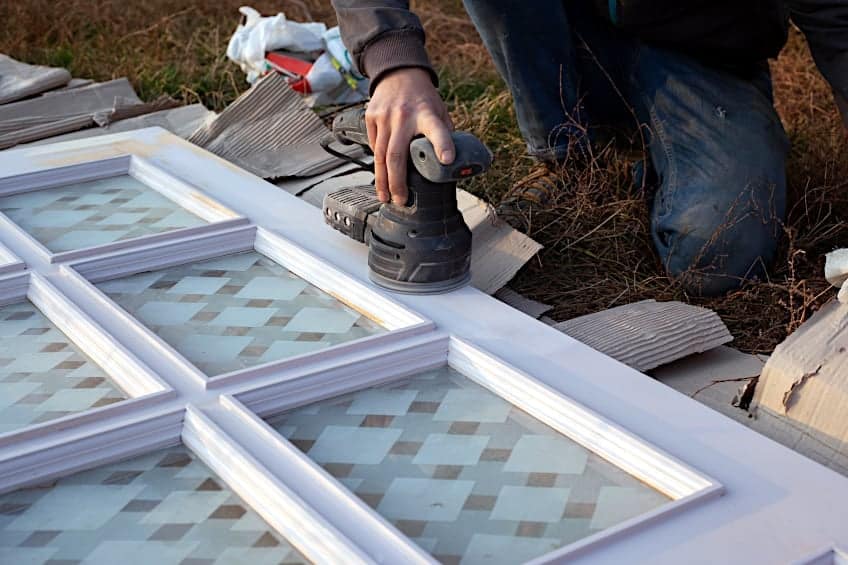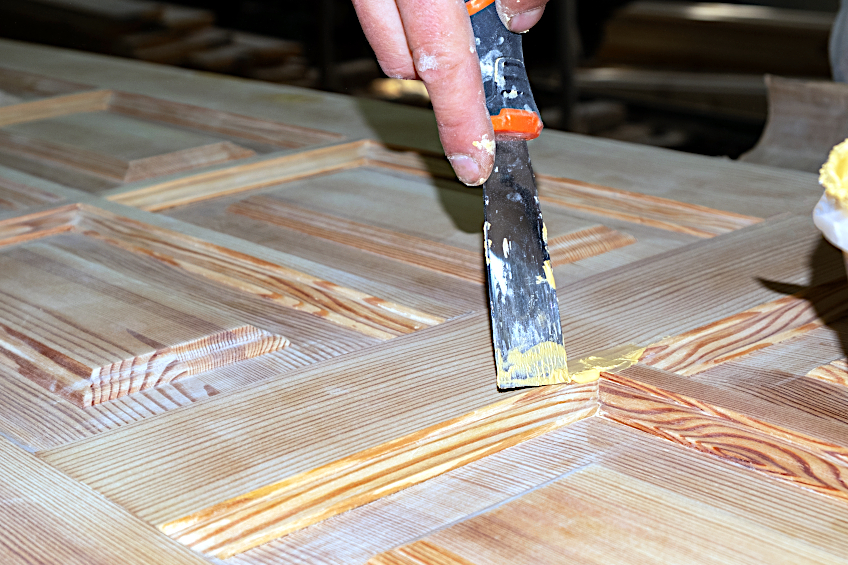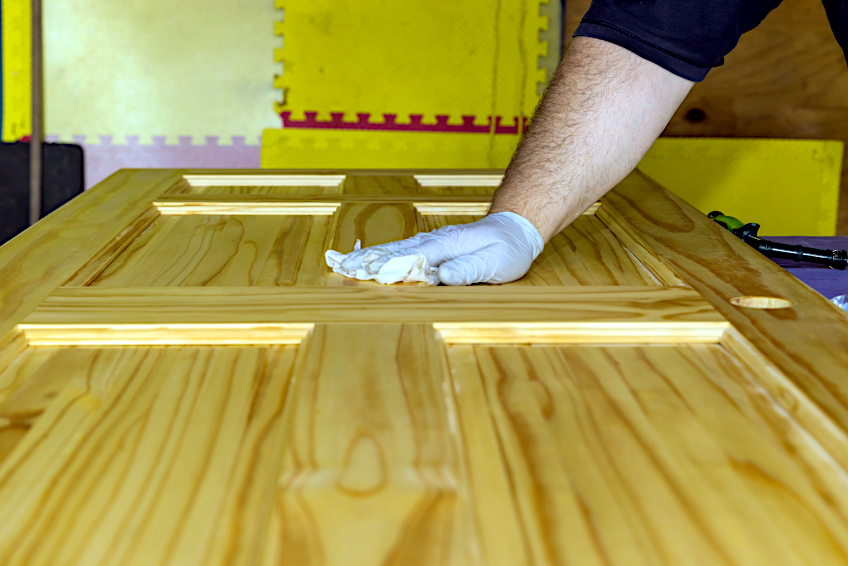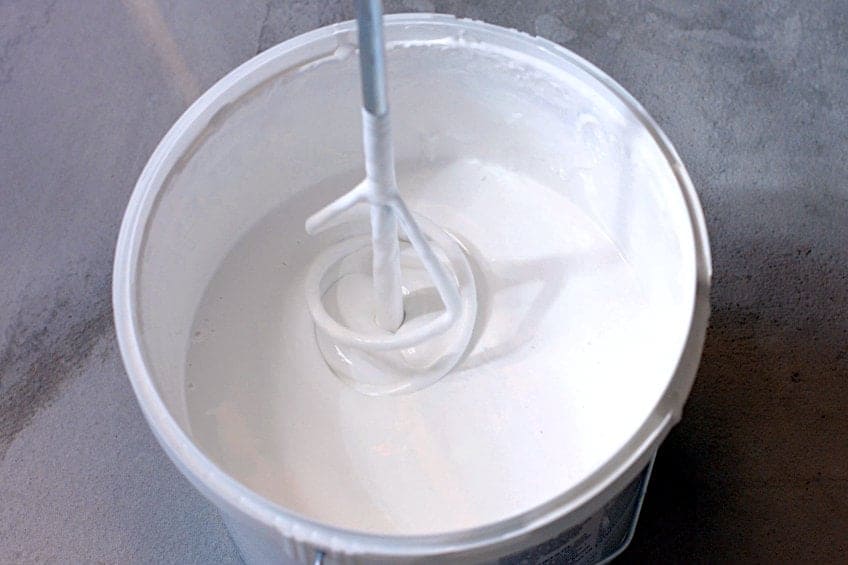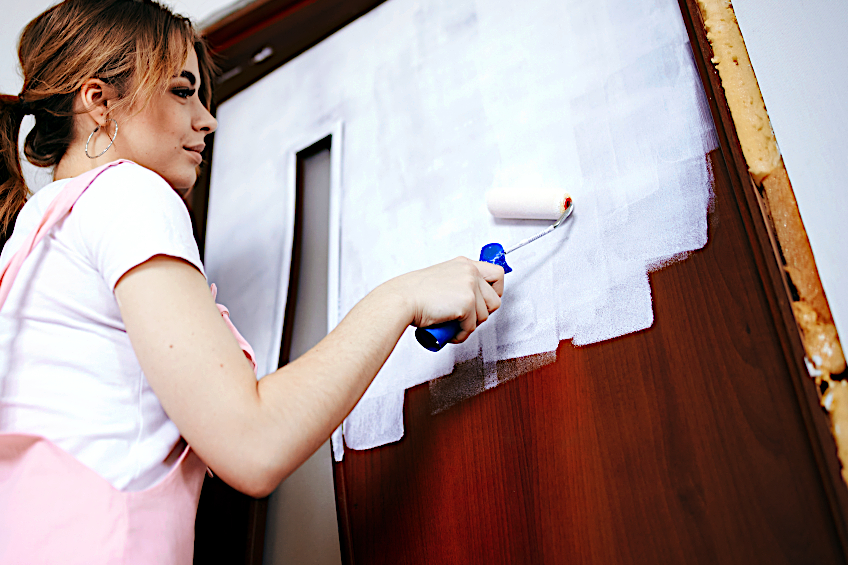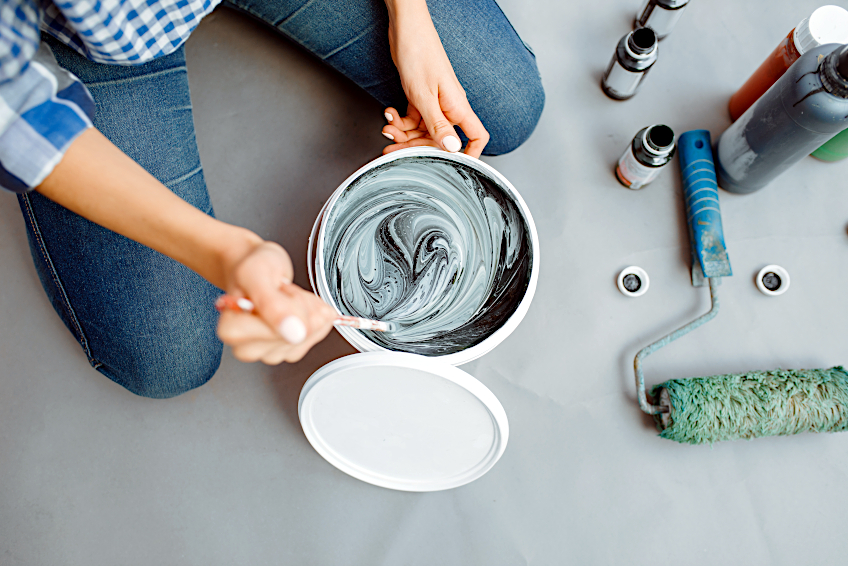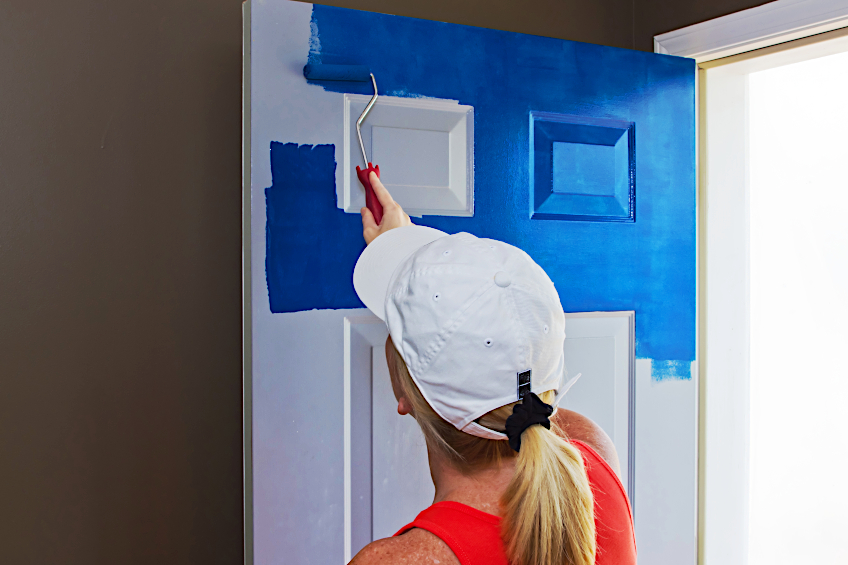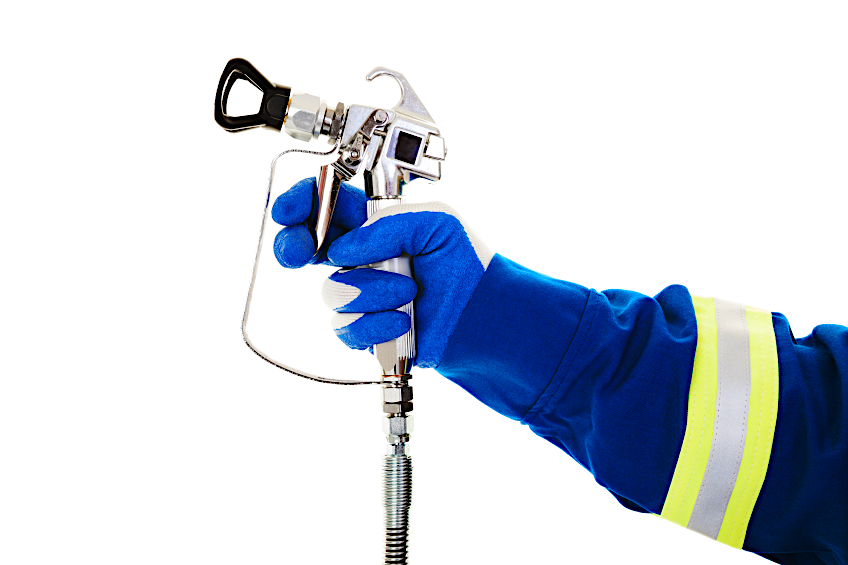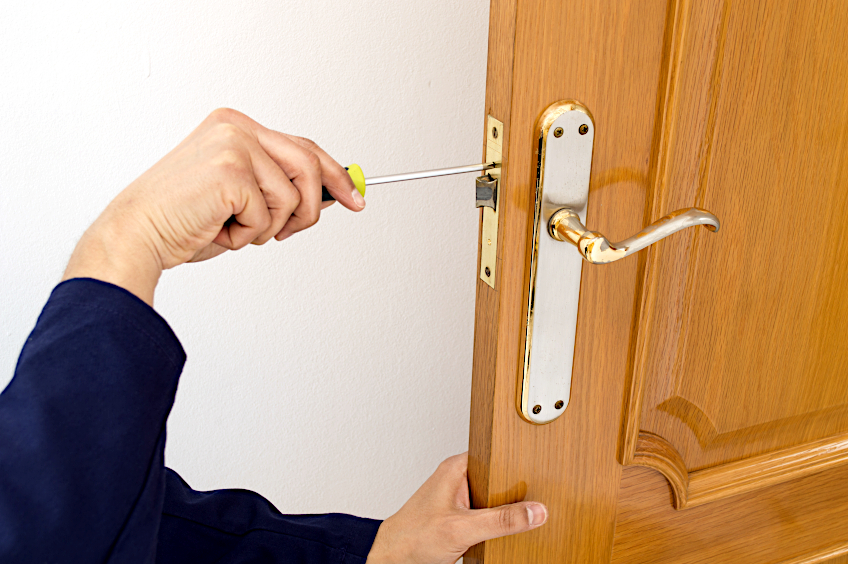How to Paint a Door – Tips to Achieve the Perfect Paint Job
This post may contain affiliate links. We may earn a small commission from purchases made through them, at no additional cost to you. You help to support resin-expert.com
Painting any part of your home can be a pretty daunting task. Between covering and moving all of your furniture and the interruption to your daily life, it can be a huge undertaking. Painting bigger surfaces like walls and flooring is fairly simple, but if you’re a veteran painter, you know that the devil is often in the details of any paint job. One of the most overlooked facets of giving your home a new color scheme is the doors. Painting doors can be tricky, so let’s have a look at how to paint doors, some of the best door painting techniques, how to paint a door without removing it, and what kind of paint is best to use on doors (both interior and exterior).
Table of Contents
- Which Is Best for Painting a Door: Brush, Roller, or Sprayer?
- What Kind of Paint Do You Use for Interior Doors?
- The Best Paint for Interior Doors and Trim
- Is It Better to Use Oil- or Latex-Based Paints on Doors?
- What Is the Best Finish for Interior Doors?
- The Best Way to Paint a Door
- Can You Paint a Door Without Removing It?
- Frequently Asked Questions
Which Is Best for Painting a Door: Brush, Roller, or Sprayer?
If you’ve ever painted a large surface before, you might be asking yourself whether a paint sprayer or a good old-fashioned brush and roller are the best choices for painting a door. With both mediums, there are pros and cons to look at, and they both tend to do a fairly good job, so you’ll mainly be choosing a method that works for you.
This being said, let’s have a look at what some of the differences are between painting a door with a roller and brush, and painting it with a sprayer.
Painting a Door Using a Brush and Roller
Sometimes, the simplest method of doing things is best. When it comes to painting, this might not be necessarily true, but there is something about painting with a brush and roller that makes the experience more intimate and allows you to pay more attention to detail. Using these tools is simple – you use the roller to paint the larger surface and use the brush to fill in the gaps and finer details.
When painting a door, you might have beading and trim that you need to pay especially close attention to or paint around. Using a roller to paint the larger door panels and then using the paintbrush to paint the rest of the trim is one of the most effective ways to paint a door. If you like the old-school look of brushstrokes, you can do the entire door with brushes too.
Painting a Door Using a Paint Sprayer
you’ve used a paint sprayer before this might seem like overkill considering that the size of most doors doesn’t warrant the use of a paint sprayer. On the other hand, if you’re painting every single door in your home at once, painting them using a brush and roller will require considerably more effort. There are different types of sprayers for you to choose from.
Some paint sprayers use compressed air, which might not be an accessible resource depending on where you live. Others use an electric impeller to pressurize the paint and spray it on a surface, but they’re a bit noisier even though they tend to be more readily available compared to the pneumatic ones. Painting a door with a sprayer is much faster, but you will need to mask up any area of the door you don’t want to be painted as you don’t have the option of simply avoiding them as you do with a brush and roller.
What Kind of Paint Do You Use for Interior Doors?
Knowing how to paint a door is great, but if you use the incorrect paint, all your hard work could all be in vain. There are loads of opinions on what the best paint is for interior doors, and the truth is that you could probably use any wood paint on the market.
The catch is that they all have their respective advantages and disadvantages depending on what you like, which is why we’ve listed some paint types that are objectively best for interior doors.
Water-Based Alkyd Paints
Water-based alkyds are a fairly new paint type. A common misconception is that they’re oil-based, but they primarily consist of water and some pigment, thinner, and binders for the color. These paints don’t produce intense colors but they aren’t dull either. The nice thing about this paint type is that they don’t contain any volatile organic compounds (VOCs) which means they can be used indoors without the need to dry them out for a day or two after painting.
Paints that contain VOCs can produce harmful fumes when being applied and while drying, so they aren’t great for painting indoor furnishings. These paints also have a fairly thin consistency which means you won’t be lobbing your brush around the surface of the door. They are also reasonably priced, which is great if you’re working on a strict budget.
Acrylic-Based Paints
Door painting can be stressful; between choosing a color and texture, the last thing you need is a paint type that’s ill-suited for the application. One of the best choices you can make choosing a paint type for interior doors is acrylic paint. Acrylic paint is made of pigment which has been suspended in an acrylic polymer, which gives it its vibrant color.
Acrylic paints contain fewer VOCs than oil-based paints but more than water-based ones, which makes them a good middle ground. This paint type is a lot thicker than alkyd paints and is usually priced a bit higher, but they are more durable and typically have a wider range of colors to choose from. They also have a unique consistency which makes them a crowd favorite for all manner of applications.
Latex-Based Paints
If you’re going to be door painting as a family or have someone helping you who has a particularly sensitive respiratory system, latex paints are the way to go. These paints don’t actually contain any latex and have virtually no VOCs in their makeup. This makes them the ideal paint for indoor use, with the only trade-off being that they aren’t as durable as other paint types.
If durability is something you’re worried about, you can work around this by sealing the surface of the door once the paint has been applied. Latex paints tend to be pretty running thanks to their water-based, so multiple coats could be needed to achieve a good result. On the bright side, they are quite affordable and have an even wider range of colors to choose from compared to acrylics and alkyd.
The Best Paint for Interior Doors and Trim
It can be tough choosing paint for your interior and exterior doors. After all, there are so many brands to choose from, all that claim to be the best there is. We’ve decided to save you some time (and hopefully some money) by hunting down what we think are the best door paints for your next color change. Remember that these aren’t the only options out there, but we think they are some of the best value for money deals available right now.
Best Alkyd-Based Paint: MICROBLEND Interior Paint and Primer
If you’ve never heard of Microblend, you’d be forgiven. They haven’t been around as long as some of the legacy brands out there, but this doesn’t mean that they’re still finding their feet. The Microblend team prides itself on its superior quality and texture, in addition to its low VOC formula which they seem to be particularly proud of.
Microblend offers impeccable quality finishes that are silky smooth in texture and leave the eye following the contours of space.
Their formula is also self-leveling and offers increased protection from UV damage too. It is also extremely durable, easy to clean, and they make a fresh batch of paint for every delivery, so you won’t be receiving paint that’s been sitting on a shelf for months. Microblend offers an astonishing number of colors too, and custom colors can be ordered by simply giving them a call!
- Water-based acrylic resin on-demand paint from Arizona based company
- Use on walls, ceilings, trim, window frames, drywall, wood, and metal
- Only needs one coat, dries hard, is self-leveling, washable, and stain-resistant
- Easy to use
- Durable
- Few VOCs
- Custom mixed for customer
- Easy to use
- Easy to clean and apply
- Cannot be used outdoors
- Cannot be purchased off the shelf
- Priced higher than would be expected
Best Latex-Based Paint: RUST-OLEUM Painter’s Touch Latex Paint
The Rust-Oleum team are veterans of the quality paint trade. Established all the way back in the early 1920’s they have had decades to refine their paint formulas to ensure that you always get high-quality paint you can trust. Their painter’s touch latex formula is no different, offering you a paint that is low in odor, VOC-free, and can be used on plastic, metal wood, and even stone!
This latex paint is perfect for painting interior doors and is sure to make any surface you use a head turner.
Not only does it look good, but it’s highly resistant to impact, abrasion, chipping, and peeling over time. The party piece of this paint has to be that it only takes around half an hour to be completely dry to the touch, which is perfect for all of your time-sensitive projects.
- Use on indoor and outdoor wood, metal, plaster, masonry, or unglazed ceramic
- Low-odor, water-based acrylic formula with durable and flat chip-resistant finish
- Covers up to 30 sq. ft., touch-dry in 30 minutes with excellent hide
- VOC free
- Easy to use
- Dries quickly
- Versatile
- Inexpensive
- Wide variety of colors
- Not as durable as other paint types
- It will need to be sealed
- Multiple coats needed for vibrant color
- Water-based paints seep into wood fibers
Best Acrylic Paint: MAJIC Paints Diamond Hard Acrylic Enamel
While this might not be a pure acrylic paint, most paint composites these days aren’t. Acrylic-enamel paints are better than acrylic paints because they are more durable and offer a superior sheen finish to any surface they’re applied to. This one from Majic paints is no different, offering you 10 variations of some of the most durable paint on the market.
Majic isn’t the most well-known brand, but their paint quality tends to speak for itself.
It is non-flammable, and can be used on various surfaces including wood, masonry, metal, drywall, and even glass! Their paint is also highly durable and easy to clean so you won’t have to worry about maintaining the finish of your doors either.
- Low-odor, non-flammable, and rust-inhibiting general purpose acrylic enamel paint
- Use on wood, metal, brick, drywall, glass, steel, tile, vinyl, aluminum, and most plastics
- Water-based paint levels to a smooth glossy finish that is scratch and scuff resistant
- Highly durable
- Low odor
- Flame-resistant
- Easy to clean
- Easy to apply
- 10 colors to choose from
- Fewer VOCs than oil-based paints
- Versatile
- Expensive
- Not a well-known brand
- Limited color selection
- Still contains some VOCs
Is It Better to Use Oil- or Latex-Based Paints on Doors?
This is a tough question to answer considering that you might be looking for certain characteristics from your paint. Oil-based paints are more durable and seep deep into the fibers of a wood to protect it as well as coat the surface. They consist of oils and varnish combined with pigments, which although make for extremely vibrant colors and long-lasting finishes, also contain loads of VOCs.
Latex paints, as we mentioned previously, are primarily water-based. They have a runny consistency, and their color is still good, but nowhere near as vibrant as oil-based paints. They also seep into the fibers of wood, but they don’t provide any protection against insects and moisture the way oil-based paints do. You might also need to apply more than one coat of paint to achieve a complete-looking finish as opposed to other paint types.
So, which is better? Well, you could argue that you don’t need to use oil-based paints for interior doors. While exterior doors are exposed to the elements and subject to accelerated decay, interior doors are protected at all times. Therefore, using a latex-based paint for your interior doors and applying a sealer won’t only cost you less, but it won’t expose you or your loved ones to any nasty VOCs during the painting and drying process.
On the other hand, you wouldn’t want to use latex paints outdoors. Even if you were to seal an exterior door after painting it with a water-based paint it wouldn’t be anywhere near the durability level needed to withstand constant exposure to UV light, heat, wind, water, and insects looking to make your door their new home.
What Is the Best Finish for Interior Doors?
Previously, we mentioned some of the paint types you should consider when painting a door, but what about the finish? Your finish determines the overall look and feel of your door once it’s been painted, but which is the best one? When choosing a finish, you need to consider things like cleaning, maintenance, how it interacts with the surface, how it reacts to natural and artificial light, and where they’ll last on the door in question.
Choosing a sheen finish means that your surface will be capable of reflecting all manner of light. This makes a given space feel bigger and brighter and intensifies the contrast between the door and the surrounding walls. The only disadvantage of a sheen finish is that it gets dirty easily, which might be a deal breaker if you have little ones running around.
A high gloss finish also might feel like a good idea at first until you realize that it tends to highlight even the slightest imperfection in the surface of your doors. This type of finish is also exceedingly easy to clean, but it tends to get dirty more often than finishes with a rougher, more textured finish. As you can see, there tend to be pros and cons to each finish type.
So, is there any way to have the best of both worlds with a finish? Absolutely! Semi-gloss finishes and satin finishes tend to have the best characteristics for painting doors. They don’t get dirty easily, they’re easy to clean, and they don’t highlight imperfections, but they can be a bit pricier compared to other finishes.
The Best Way to Paint a Door
Looking for the best way to paint a door? There are a few tips and tricks you can use to ensure that our door painting experience is as smooth as possible. This is why we have prepared a short tutorial with pro techniques you can use to ensure that you have the best-looking doors in your neighborhood once you’re done.
Just be sure that you have everything you need and that both your door and your workpiece are adequately prepared.
Prepare Your Workspace
Before we get into how to paint a door let’s talk about preparation. Preparing your workspace well ensures that your painting experience won’t be interrupted by you looking for things or you accidentally getting paint on your furnishings or floor. The first step to preparing your workspace is to ensure that it is well ventilated and that you have good airflow across the area you’re working in.
Next, you want to ensure that all of the surfaces that you don’t want any paint getting on to are covered up with either a tarp or some old newspaper and painter’s tape. Start by covering elevated surfaces and then the floor of the area you’ll be working on. Finally, ensure all of the tools you’ll be using are easy to reach and that your workspace is free of obstructions.
Remove and Prepare the Door
While it is possible to paint a door without removing it, if you’re painting all of the doors in your home or simply want an easier time painting it, the best thing to do is remove it from its hinges. It’s easier to paint a door when it’s placed flat down, so find a space where you can lay the door down and control the lighting. This can be on your porch or in your garage if you have the space to spare.
Once you have the door off its hinges and flat down, get some soap and water and give the surface of the door a thorough clean. Ensure that you clean in all the tight spots like the areas around the hinges and doorknobs. Once you are done clearing, allow the door to dry completely before moving on to the next step in the process.
Once you’re sure the door is dry, remove all of the old hinges and doorknobs. This can usually be done with one screwdriver (usually a Phillips’s head) and once all of the metal bits have been removed, go ahead and give them all a nice clean before you prepare your door.
Remember, you’re going to have a freshly painted door, so you don’t want to ruin the look with dirty hardware. While you’re there, grab some wood filler and fix any dents or scratches on the door’s surface, just be sure to let it dry for the manufacturer’s recommended time period before moving on to the next step in the process.
Sand the Door
One of the most important and labor-intensive parts of the painting process is sanding the door. You can use a power sander or sanding pads on the surface of your door. If you are going to be using a power sander, we recommend that you use an orbital sander instead of a belt sander. Why? Belt sanders are powerful, and you stand the chance of eating up the surface of your door, especially if you have no experience using one.
The trick with sanding a door is to ensure that you sand with the grain of the wood. This way ensures that you get rid of old brushstrokes and foreign objects that could have gotten stuck in the paint during the initial painting process. If you’re wondering what sandpaper works best, it’s usually between 180 and 200 grit, as this is fine enough to ensure that the surface is nice and smooth for the rest of the process.
Sanding with the length of the door is also a good idea. All you need to do is divide the door into sections and sand them one by one, this way you tend not to miss any spots while you are working, and it gives you a chance to check for any spots you may have missed with the wood filler earlier too.
If you are sanding by hand and find that the paint is saturating the sandpaper, this is a pretty common problem. A good workaround for this is to use rougher sandpaper initially and then progress to a finer grit once the majority of the work has been done. This method might actually make your surface smoother than if you were to use a power sander with a fine grit from beginning to end, but it depends on your skill level and the type of paint you’re removing from the door.
Once you are done sanding, it’s time to remove the dust you’ve created from the door’s surface. Some people use compressed air, but this often leaves the dust floating around your workspace which can be bad for your health. We recommend using a vacuum cleaner to remove the majority of the dust and then using a damp cloth to clean up the finer, more stubborn particles.
Prime Your Door
Whether you’re here to find out how to paint exterior doors, how to paint a front door, or how to paint an entry door, one of the most important things you’ll do is prime your door’s surface. Depending on what paint you’ve chosen, you will likely be using a different primer.
Before you get to applying your primer, though, be sure to give it a good stir to ensure that the heavier particles stuck at the bottom of the can are reintroduced back into the mixture.
Once your primer has been mixed up, it’s time to apply it. If you’re applying your primer with a brush and roller, pour some out into a painter’s tray (not too much) and get some on your brush and/or roller. As you did when you were sanding, you’re going to want to apply your primer by following the length of the door.
Do this section by section and do your best not to over-apply the primer to the surface. If you do, this won’t affect the quality of your finish but it will affect how long it takes the primer to dry, which can be annoying if you happen to be working on a tight schedule. Once you’re happy with the job you’ve done priming the surface, allow it to dry for the manufacturer’s recommended time period.
Once the primer has had a chance to dry completely (do a check by hand), give the primed surface a light sand. You can use a fine-grit sandpaper of around 180 to 200 grit for this process. This should just be a light sand to increase surface friction for the painting process, and when you’re done, clear all of the dust off of your door with a cloth and vacuum cleaner.
Paint the Door
It’s finally time to learn how to paint a door! Remember, whether you’re here to find out how to paint exterior doors, or how to paint interior doors, the process remains more or less the same regardless. However, the process can differ slightly if you’re going to be using a paint sprayer instead of the conventional brush and roller.
This is why we’ve prepared a short tutorial for each as well as some pros and cons.
Painting With a Brush and Roller
Although painting with a brush and roller can be labor intensive (and time-consuming) it’s actually pretty simple. Start by opening your paint can and giving it a good stir, just like with your primer some of the heavier particles could have sunk to the bottom of the can if it’s been standing on a store shelf for a while.
Once your paint has been mixed, it’s time to pour some out into a paint tray. Before you get started, ensure that you have used painter’s tape to mask areas that you don’t intend on painting right now like trim or embossed areas of your door. Next, get some paint onto your roller and start by painting the larger areas of the door.
As you did with the primer earlier, you want to follow the length of the door when painting the big panels. You can divide the door up into sections so it’s easier to manage and you’ll be able to pay more attention to detail this way. When the majority of the door has been painted, fill in the finer details using your brush. Once one side of your door has been painted, allow it to dry for the manufacturer’s recommended time period before flipping it over and repeating the process on the other side.
- Cost-effective
- More attention to detail
- Allows for visible brush strokes
- Less chance of dirtying your workspace
- No aerosolized paint
- Time consuming
- Labor intensive
- Can only paint one side at a time
- Tools need to be soaked and cleaned afterward
Painting With a Paint Sprayer
Painting with a sprayer is easier than painting with a brush and roller set up. All that you need to do is ensure that your paint has been mixed well, pour it into your sprayer, and get to spraying. If you’ve never used a paint sprayer before, it can be tricky, so we recommend painting on a spare piece of board before moving on to your door.
Painting along the length of your door makes the most sense when painting with a sprayer, just be sure that all the sections you don’t want to paint have been taped up. Start by spraying off the board and then moving your wrist in one even, uninterrupted motion across the surface of your door, maintaining a consistent trigger pressure throughout your pass.
Repeat this process until one side of the door has been painted. Allow the paint to dry for the manufacturer’s recommended time period before moving on to the next side. If you want to avoid waiting for each side to dry, you could put together two horizontal stands, add two screws to the bottom and top ends of your doors, allow the screws to rest on the stands, and rotate the door on this axis while spraying it.
- Less time consuming
- Only one tool needed
- Easy to use
- Multiple coats can be applied quicker
- No brush strokes are produced
- Can produce more mess
- Possibility of overspray
- Possibility of orange peel
- Expensive
Can You Paint a Door Without Removing It?
Wondering how to paint a door without removing it? It is entirely possible to paint a door without removing it from its hinges. How do you go about this? All that you need to do is apply painters’ tape over the part of the hinge that’s attached to the door and the part that’s attached to the frame. When it comes to hardware, we recommend removing the door handles and any other additions beforehand.
Once your hardware has been removed, ensure that you have protected the environment around the door you will be painting. This involves placing a tarp (and some painters tape to secure it) around the walls and doors of the area you’ll be painting in. Also, ensure that your work area is well ventilated and that the area on both sides of the door is covered.
Additionally, while it is possible to use a paint sprayer to paint a door while it’s still attached to the frame, it can be exceedingly challenging to keep paint off the rest of the surfaces. For this reason, we recommend using a brush and roller when painting a door attached to its hinges, especially if said door is located indoors.
Now that you know a little bit about painting doors why it can be challenging, how to prepare your door, how to paint it both manually and with a paint sprayer, and that it is indeed possible to paint a door while it’s still on its hinges, it’s time for you get out there and put your new-found knowledge to the test. Remember to always work in a well-ventilated environment when using paint and to always prepare your surfaces well.
Frequently Asked Questions
Can You Use Acrylic Paint When Painting an Outside Door?
Can you use acrylic paint when painting an outside door? Yes, you can! Acrylic paint is one of the most durable paint types out there. It might not be as resistant to damage and decay as oil or enamel paints, but it will last for a long time, and it could last for even longer if it is sealed.
What Paint Do You Use for Front Door Painting?
Wondering what paint to use for front door painting? One of the best paints to use for any exterior wooden surface is oil-based paint. These seep deep into the wood fibers and provide an external and internal layer of protection against moisture, impact, abrasion, heat, and frost.
Is Painting an Entry Door Difficult?
Painting an entry door isn’t any easier or more challenging than painting any other door. The only difference is that the type of paint you’ll use will be different. While oil-based paints do well on exterior doors, you can use latex enamel paint too, which is a more modern solution.
What Is the Best Paint for Front Door Painting?
Looking for a good paint type for front door painting? Some of the best paints on the market for front and back doors are acrylic enamel paints and oil-based paints. These provide the required protection for the surface of the door and have extremely vibrant color and texture.
What Do You Use for a Front Door Repaint?
Looking for a good paint for your next front door repaint? Front doors are exposed to the elements on a daily basis and therefore need a paint type capable of withstanding loads of potential damage. Enamel and oil-based paints are therefore a good choice for both interior and exterior protection.


